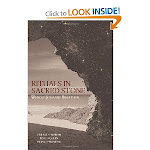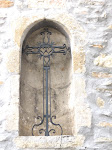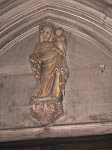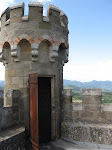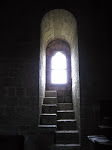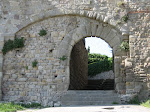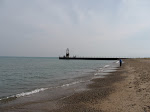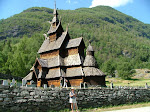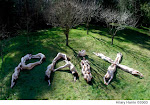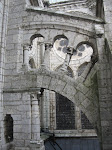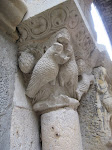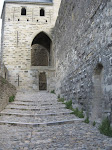It's time. I'm returning to Norway for the summer, for three glorious months filled with family gatherings, fish and white wine, and a pilgrimage to find the footprints of the heroes of my next book. I've started on my next big project, another substantial historical novel. I'm going a thousand years forward in time from the teachings of Yeshua and Mariam, looking for what happened to the body of knowledge they shared with their people.
This brings me to 1015, to the time of the Vikings, the time of the Keltic Church and the time of the Cathars when they were the strongest. And the time when they all were in conflict with the church of Rome.
This has become a lonely footnote in the history books. The Keltic Church was the first early church, established by Yeshua and his family in the first century AD. The church of Rome didn't come into existence until after 325AD, when Constantin declared Christianity to be the official religion of Rome. It became the continuation of the Roman Empire and was declared the Holy Roman Empire under Charlemagne in year 800AD.
The Keltic monks knew that their time was short before the powerful and military strong bishops ordained by Rome would take over their islands far west. It was time to come up with a plan. They knew how to anchor wisdom into stone. They decided to move their knowledge to a place where it would take a long time for the catholic church to find a foothold. They chose a place with ample mountains and stones to anchor their faith. 1000 stave churches, dragon power points, were built in Norway over 200 years. Saints were established and buried in strategic places to form a geometric figure across the land. Bishop Grimkjell knew what he was doing. It had been planned by bishops and monks for several hundred years already.
Chretien Trencavel, a cathar from Carcassonne is sent to Rouen by his grandfather to get him safely out of their territory. He befriends a young Viking warrior who claims he will be king. When Carcassonne is attacked, he willingly goes with his new friend on adventures he could never have dreamed up.
Olav, the brave young Viking, appreciates his new friend, especially one who can handle a sword with grace and strength. They get baptized in Rouen and are ready to sail to England and then his homeland of Norway, where he will find support and claim his birth right as king.
Rane, Olav's foster father and steadfast pillar of strength and wisdom, knows the auspicious signs of Olav's birth. Following a vision, Rane went to the hill where Olav's ancestor was buried sitting upright inside. He took the sword and the belt from the grave and brought them to the mother, who was in hardship giving birth. Placing the items near her, the child is born, and is given the sword and ring as gifts signifying the important birth.
I've planned a pilgrimage with Dan where we'll visit the farm of Chretien, who took the name Ketil Kalv. We will go to Nidaros where Olav was buried, and to Selja where Grimkjell's monks established the first monastery. We will find the center of the pentagram that covers the southern part of the country, making it vibrate with the wisdom taught so long ago by Yeshua and Mariam.
Monday, May 26, 2014
Subscribe to:
Posts (Atom)

